The kitchen holds a vital role among the rooms in a house. Ensuring its flooring is done right is a crucial task. Kitchen floors require special consideration due to the various occurrences that take place there.
From hot surfaces and oil spills to scattered foods and accidental scratches, numerous possibilities can unfold in the kitchen.
So, which flooring option would be the most suitable choice for the kitchen?
Things to Consider when Choosing Kitchen Flooring
A kitchen is a place where numerous events can unfold within a single day. Cooking, in particular, involves a multitude of steps, ingredients, and equipment, which can potentially lead to water spills, hot surfaces, and accidental collisions with kitchen utensils.
Thus, choosing the right flooring option for your kitchen requires careful consideration. There are several types of flooring options available, each with its own advantages and disadvantages.
Given the dynamic nature of a bustling kitchen, there are certain factors you should evaluate when selecting your flooring:
- Water resistance: Your chosen flooring should be able to withstand water and oil spills, although it doesn’t necessarily need to be completely waterproof. It should be sufficiently resistant to damage caused by moisture.
- Texture: Consider the comfort of the flooring’s texture. This refers to how your feet feel when standing on it for extended periods while cooking or washing dishes.
- Durability: The kitchen is prone to accidents like items breaking or knife scratches, often unintentionally. Therefore, it’s important to choose a flooring material that is strong, resilient, and capable of withstanding such impacts.
- Heat resistance: It is not uncommon for hot pans or other hot objects to come into contact with the kitchen floor. Additionally, natural sunlight may also contribute to heat exposure. Hence, it is crucial to assess whether the flooring material can tolerate such conditions without sustaining damage.
Considering these aspects will help you make an informed decision about the most suitable flooring option for your kitchen.
Best Flooring Options for Kitchen
After carefully reviewing the aspects to consider when selecting kitchen flooring, we have curated a list of the top recommendations just for you.
1. Ceramic/Porcelain Tile
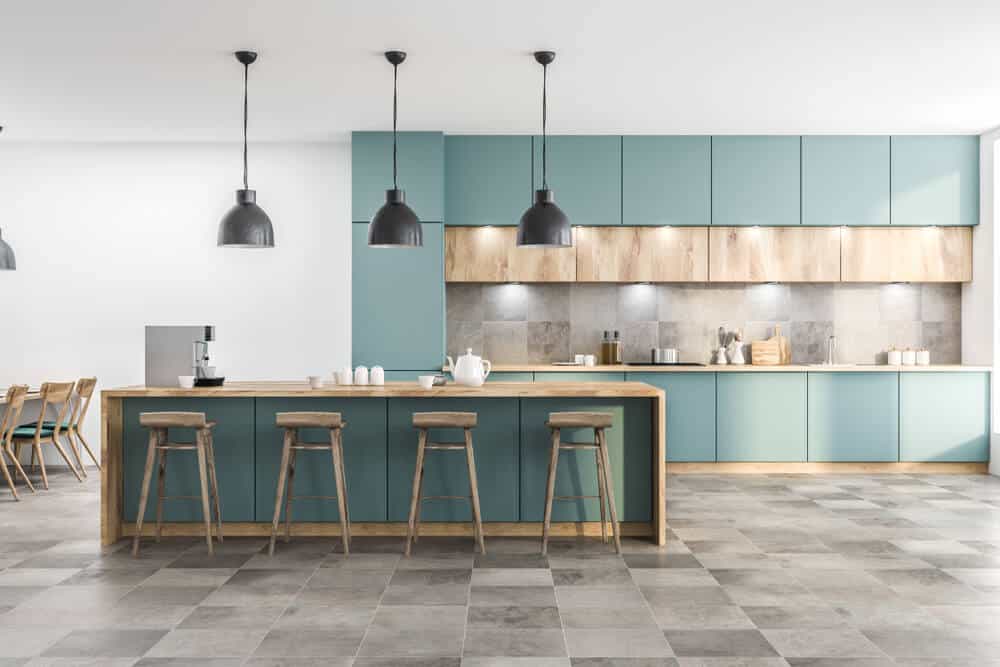
When it comes to kitchen flooring, ceramic or porcelain tiles stand out as an excellent choice. Their durability is unquestionable, and you can opt for either glazed or unglazed tiles.
Glazed ceramic tiles have a shiny and glossy appearance, while unglazed tiles offer a cool, earthy look. Regardless of the type, ceramic or porcelain tiles are fully capable of withstanding water spills and even flooding, similar to what might occur in a bathroom.
However, it’s important to ensure that the grout between the tiles is properly sealed to prevent water from seeping in. Without proper sealing, the color of the tiles could fade over time. For this reason, it is advisable to have ceramic tiles installed by a professional.
In terms of heat resistance, ceramic tiles also perform well. Although the surface may feel hot initially, it tends to cool down relatively quickly due to the tile’s natural properties.
Ceramic tiles offer a wide range of design options, making them suitable for any kitchen style you may have in mind.
Nevertheless, it’s worth noting that the glossy and hard surface of ceramic tiles can become slippery when wet. Additionally, standing barefoot on ceramic flooring for extended periods may not be the most comfortable experience. To mitigate these concerns, it is recommended to wear cushioned slippers or place rugs in common standing areas.
2. Hardwood
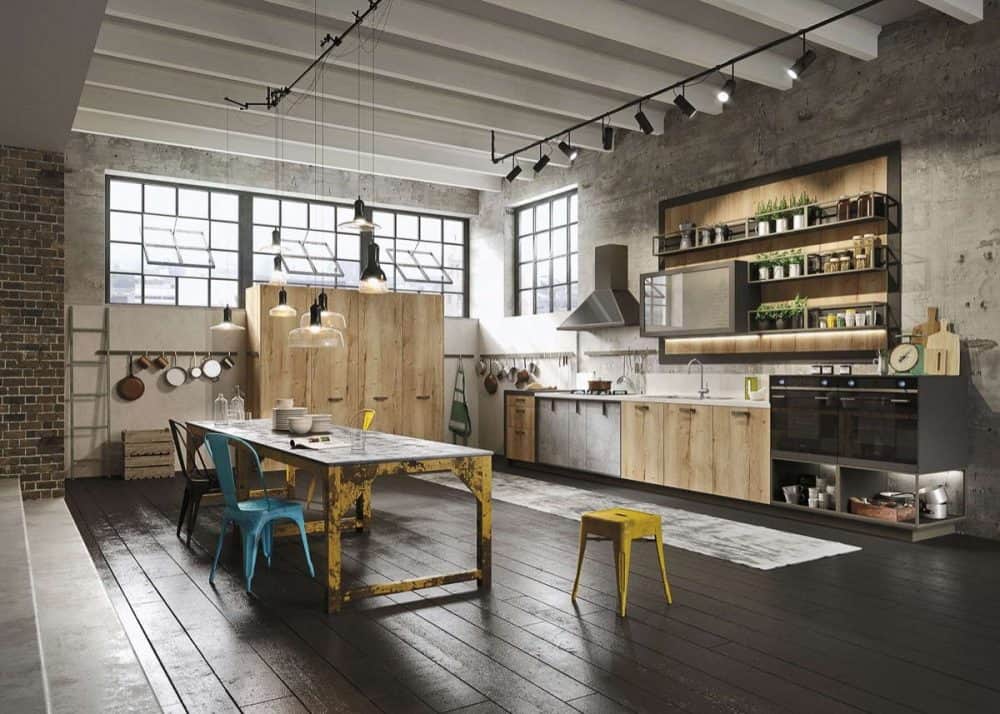
While there are various alternatives to hardwood flooring that have gained popularity, the authenticity and natural beauty of real hardwood remain unmatched. Its warm tones and the cozy feeling it imparts when you step or sit on it are truly invaluable.
For this reason, many individuals still choose hardwood as their preferred flooring option for the kitchen. The warmth and natural characteristics of hardwood planks ensure that your feet won’t feel cold or uncomfortable.
Some may worry about hardwood’s susceptibility to moisture and water, which could potentially compromise its durability. However, there’s no need to fret! Thanks to technological advancements, the introduction of polyurethane, sealers, and top coatings provide protection to hardwood flooring against water spills and moisture. It is important to promptly wipe away any spills to maintain the flooring’s integrity.
Furthermore, engineered hardwood flooring has emerged as an innovative solution. This type of flooring features a veneered top layer of real hardwood, making it easier to install while still offering excellent texture and sufficient resistance to moisture, water, and heat. Both solid hardwood and engineered hardwood are suitable choices for kitchen flooring.
3. Cork
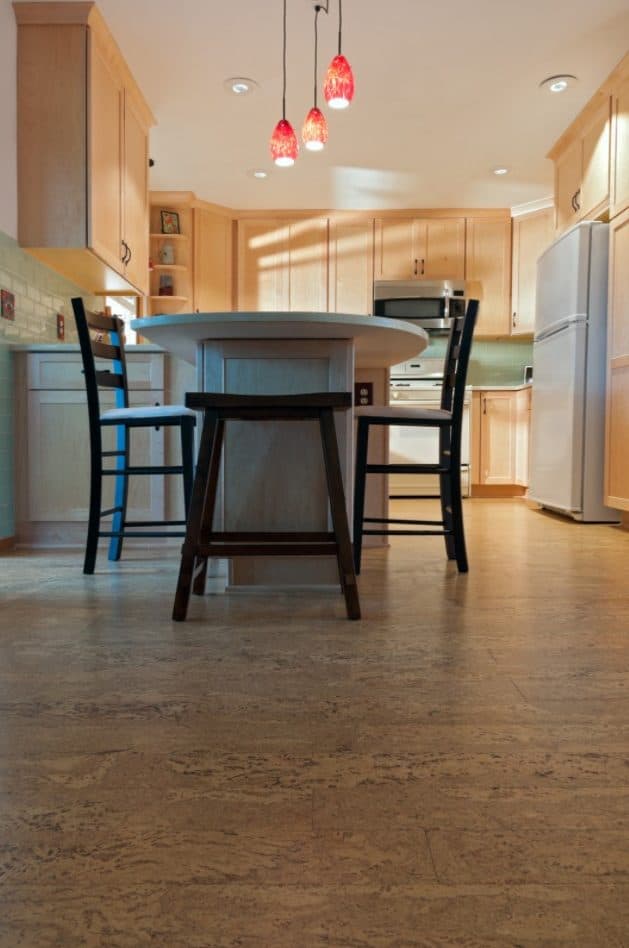
4. Bamboo
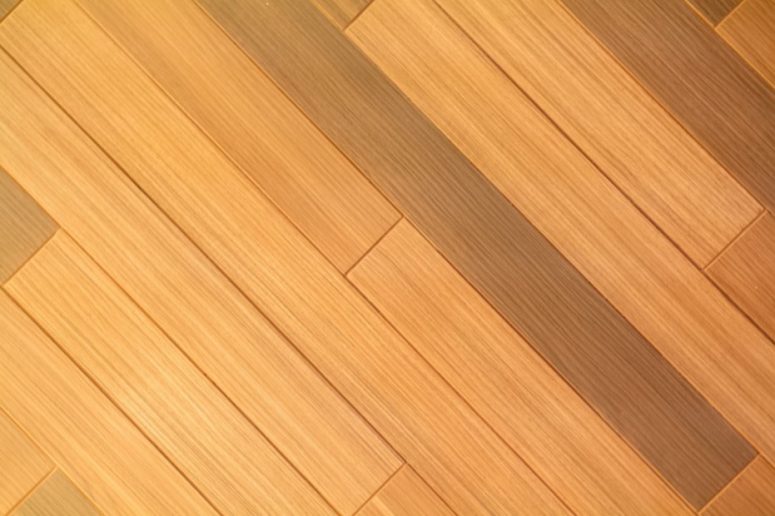
Bamboo flooring, similar to hardwood flooring, is a natural product. However, bamboo has a harder texture compared to hardwood, making it particularly suitable for close kitchen concepts rather than open kitchens.
What sets bamboo flooring apart from hardwood and cork is its superior water and heat resistance. Bamboo surfaces are naturally waterproof, and they are typically sold with a wear layer coating, enhancing their waterproof properties beyond that of hardwood.
Despite some similarities with hardwood, bamboo flooring is well-suited for kitchens due to its ease of installation. Its hard texture makes it resistant to scratches and less prone to breakage. Additionally, like ceramic tile, bamboo flooring does not feel cold underfoot; it provides a warm and natural sensation.
To maintain its durability, periodic refinishing is necessary for bamboo flooring. This process, however, is not a simple task and is best left to professionals.
Lastly, it is worth noting that bamboo flooring tends to be more expensive than hardwood flooring. This makes it a suitable choice for those seeking a minimalist kitchen flooring solution or those with a smaller floor area to cover.
5. Vinyl
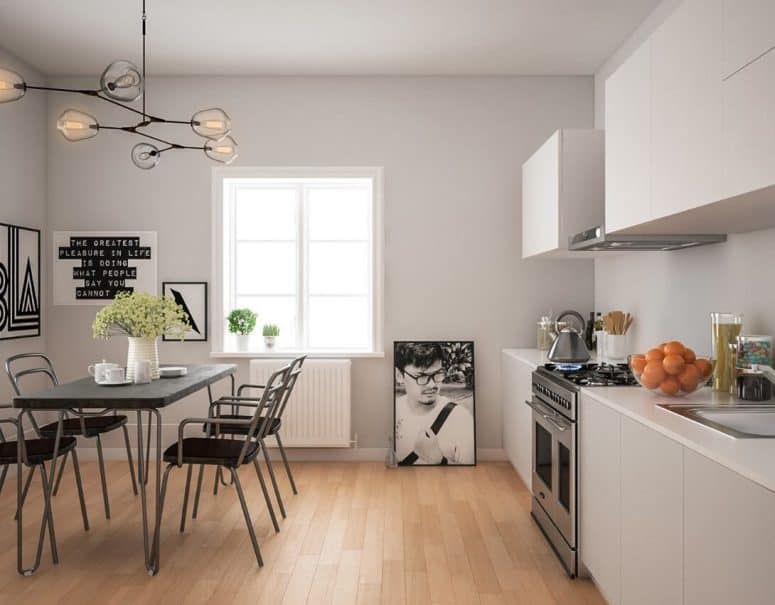
Did I mention that vinyl is also a top contender? Absolutely! Vinyl flooring is exceptionally modern and aligns with the latest trends. It is available in sheet form, as well as planks and tiles.
Luxury Vinyl Tile (LVT) and Luxury Vinyl Plank (LVP) are the newest iterations of vinyl flooring. Vinyl stands out as the most versatile option, boasting 100% water resistance, heat resistance, durability, and an extensive range of designs compared to other flooring types.
When it comes to your kitchen, vinyl is more than capable of handling high traffic, water spills, and hot surfaces. There’s no need to worry when you choose vinyl for your kitchen flooring.
However, some individuals may find vinyl flooring less comfortable for prolonged standing due to its firm texture. Vinyl is composed of PVC, which gives it a plastic-like feel.
While LVT and LVP are relatively simple to install and suitable for DIY projects, sheet vinyl can be challenging and typically requires professional installation.
Lastly, vinyl flooring comes with warranties that extend up to 20 years, ensuring long-term durability. It’s a worthwhile investment for your stylish kitchen. All in all, vinyl proves to be a highly suitable choice for your kitchen in every aspect.
6. Linoleum
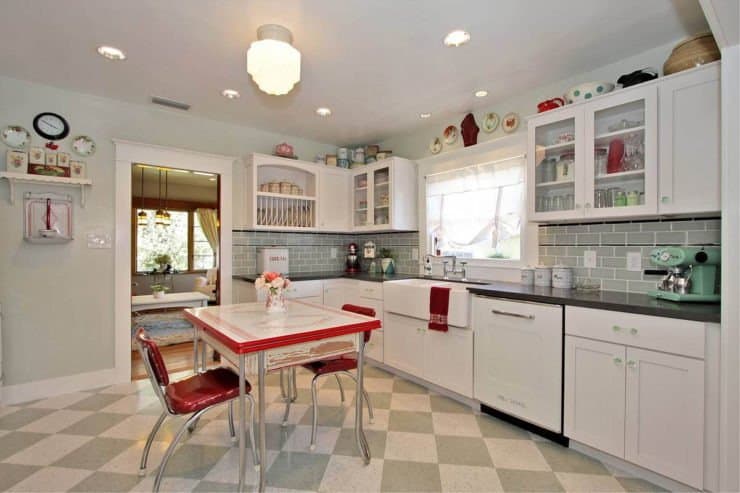
Linoleum flooring is often considered an old-fashioned choice, but it remains a popular option for many people who want to install it in their kitchens. One of the main advantages of linoleum flooring is its ease of cleaning.
Despite being made from natural resources, linoleum flooring can tolerate damp mopping without any issues. However, it’s important to avoid prolonged exposure to standing water, as it can damage the color, texture, and installation of the flooring. As long as it is installed in areas with light to heavy foot traffic, linoleum flooring should perform well.
The greatest value of linoleum flooring lies in its natural composition. It is crafted from linseed oil, cork dust, wood flour, and mineral pigments, which are compressed together with a natural coating to create perfectly shaped linoleum flooring.
Moreover, linoleum flooring is highly durable and can last up to 40 years with proper care and maintenance. Its longevity is a testament to its reliability and value as a flooring option.
7. Natural Stone Tile
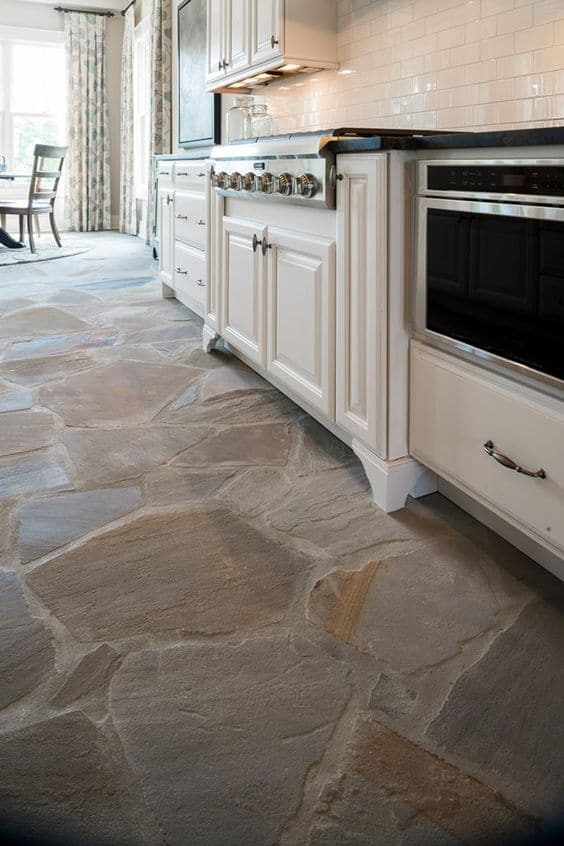
Which One Is The Best Flooring for Kitchen?
To summarize the discussion, it appears that both of you have different preferences when it comes to choosing the ideal flooring for your kitchen.
However, it’s important to acknowledge that each type of flooring mentioned above has its own strengths and weaknesses. What truly matters is considering the four aspects we previously discussed: water and heat resistance, durability, and texture or comfortability. Ultimately, the goal is to select a visually appealing flooring option that is both suitable and worthwhile for your kitchen.
Therefore, I encourage you to carefully evaluate these four aspects and compare them with the specific conditions of your kitchen. The decision of which flooring option is the best fit ultimately lies in your hands. Enjoy the process of decorating your kitchen floor and may it bring you happiness and satisfaction!